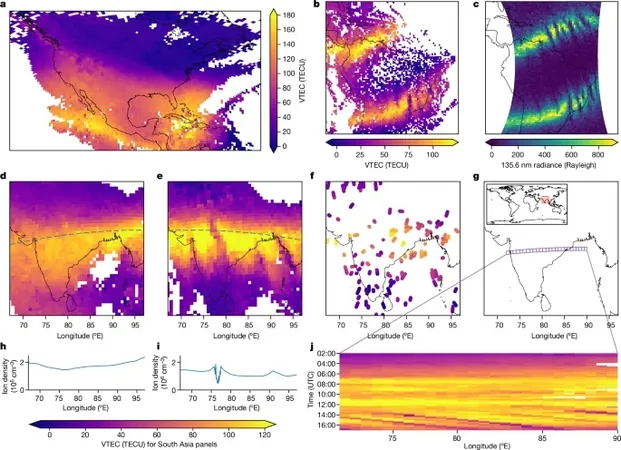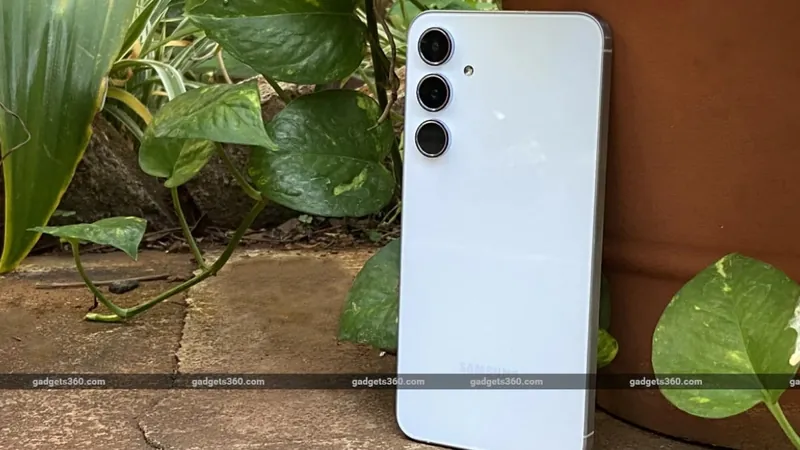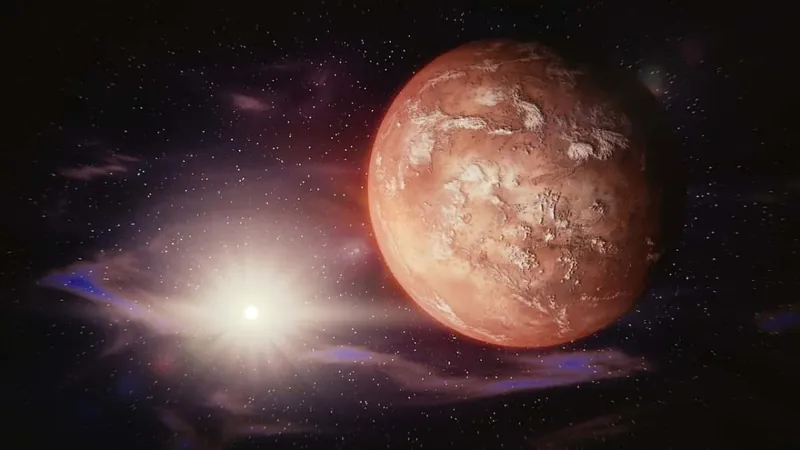
Unlocking Secrets of the Ionosphere: How Your Smartphone Can Help Map Our Atmosphere!
2024-11-17
Author: Li
Introduction
Imagine if your smartphone could do more than just connect you with friends and navigate your way through the city. What if it could also play a crucial role in mapping the Earth's atmosphere? Researchers are exploring this fascinating idea by harnessing the power of millions of mobile devices to chart the ionosphere—a critical layer of our atmosphere that stretches from 50 to 1,500 km above the Earth's surface.
What is the Ionosphere?
The ionosphere is formed through the ionization of gases by solar radiation, creating a mix of charged particles. This layer is essential for radio communications, enabling the reflection and refraction of radio waves which allows for long-distance communication. However, its density and composition fluctuate substantially with solar activity, posing challenges for satellite communications and navigation systems.
Revolutionary Research
Recently, a groundbreaking study led by a team of researchers from Google, published in the prestigious journal Nature, has made significant strides in understanding this elusive atmospheric layer. By utilizing data from over 40 million Android smartphones, they've created innovative models to map the ionosphere’s conditions. This crowdsourced approach could revolutionize how we study the atmosphere and enhance satellite navigation, especially in under-explored regions like Africa and South America.
Challenges for GPS Technology
The ionosphere can be notoriously tricky for GPS technology, as the signals from satellites can be slowed down by the varying density of this atmospheric layer. In fact, inaccuracies in signal timing can lead to GPS errors of five meters or more—a significant issue for applications requiring pinpoint precision. Thus, having a reliable model of the ionosphere is essential for optimizing these navigation systems.
Innovative Data Collection
Traditionally, real-time maps of the ionospheric density were generated using ground-based stations that track signals from satellites across dual frequencies. Lower frequency signals experience greater delays in high-density ionospheric conditions compared to high-frequency signals. By combining the data from many smartphones—each capable of receiving multiple frequencies—the Google team has managed to filter out noise, producing a clearer picture of the ionosphere’s behavior.
Current Status and Future Prospects
Currently, the project is focused on Android smartphones, with users providing sensor data to contribute. Excitingly, the analysis has already spotlighted previously undetected plasma formations over South America, enriching our understanding of this atmospheric layer.
Conclusion
So, the next time you're out and about with your smartphone, remember: it could be gathering vital atmospheric data that contributes to mapping the vast and mysterious ionosphere! Who knew your mobile device could be a hidden scientist? Stay tuned, as this innovative approach promises to unlock even more secrets of our planet's atmosphere!



 Brasil (PT)
Brasil (PT)
 Canada (EN)
Canada (EN)
 Chile (ES)
Chile (ES)
 España (ES)
España (ES)
 France (FR)
France (FR)
 Hong Kong (EN)
Hong Kong (EN)
 Italia (IT)
Italia (IT)
 日本 (JA)
日本 (JA)
 Magyarország (HU)
Magyarország (HU)
 Norge (NO)
Norge (NO)
 Polska (PL)
Polska (PL)
 Schweiz (DE)
Schweiz (DE)
 Singapore (EN)
Singapore (EN)
 Sverige (SV)
Sverige (SV)
 Suomi (FI)
Suomi (FI)
 Türkiye (TR)
Türkiye (TR)